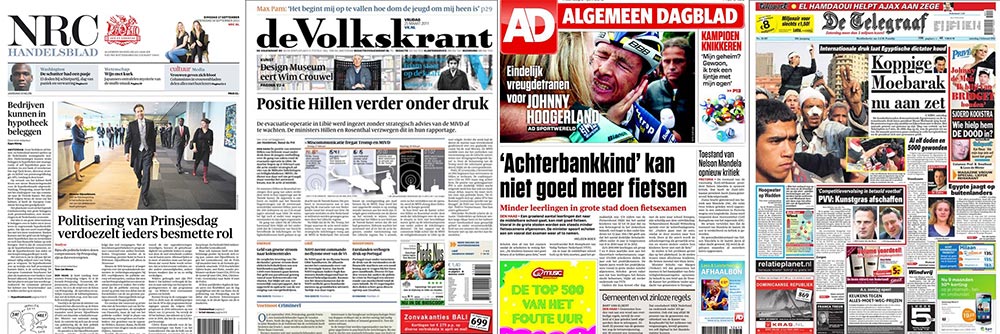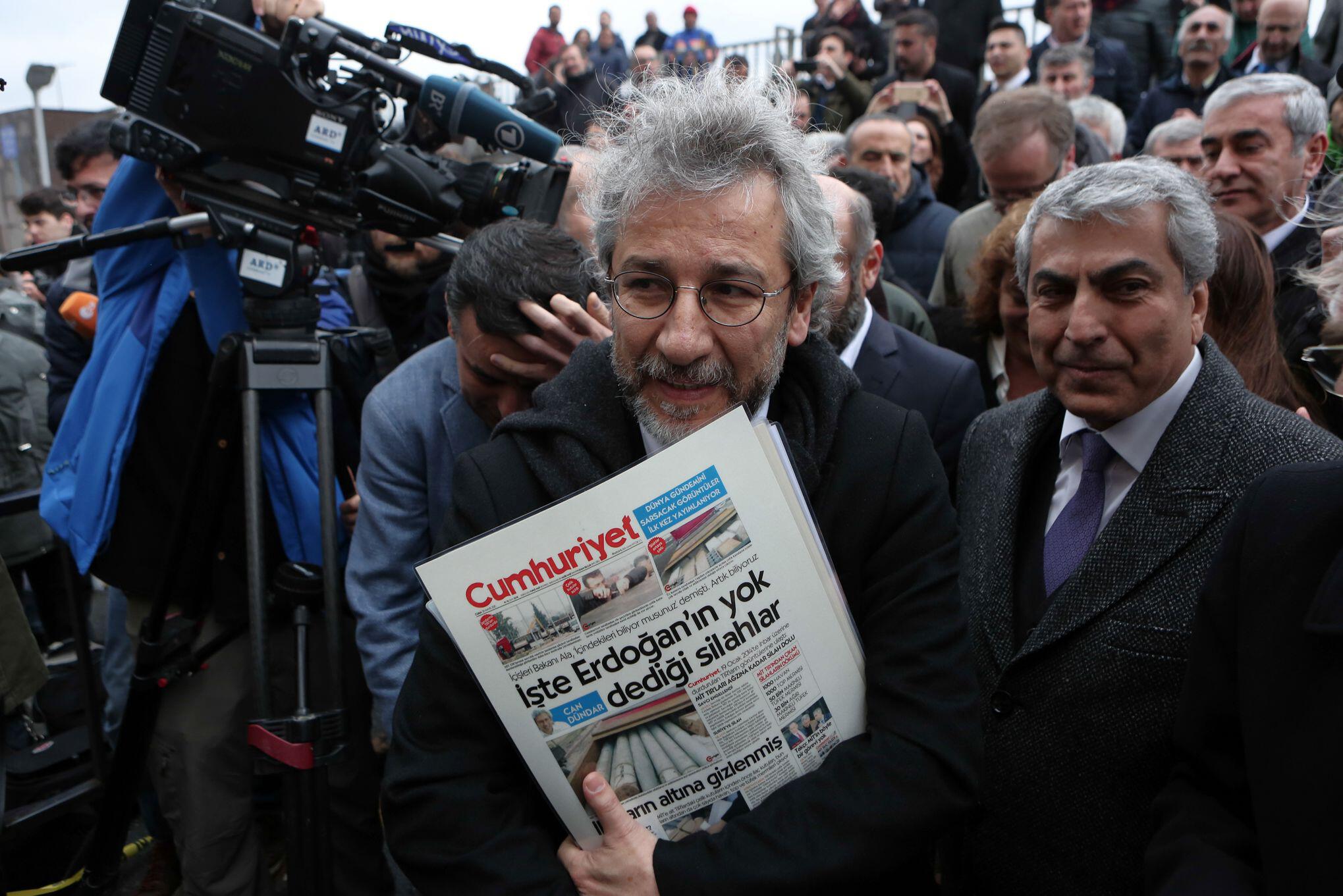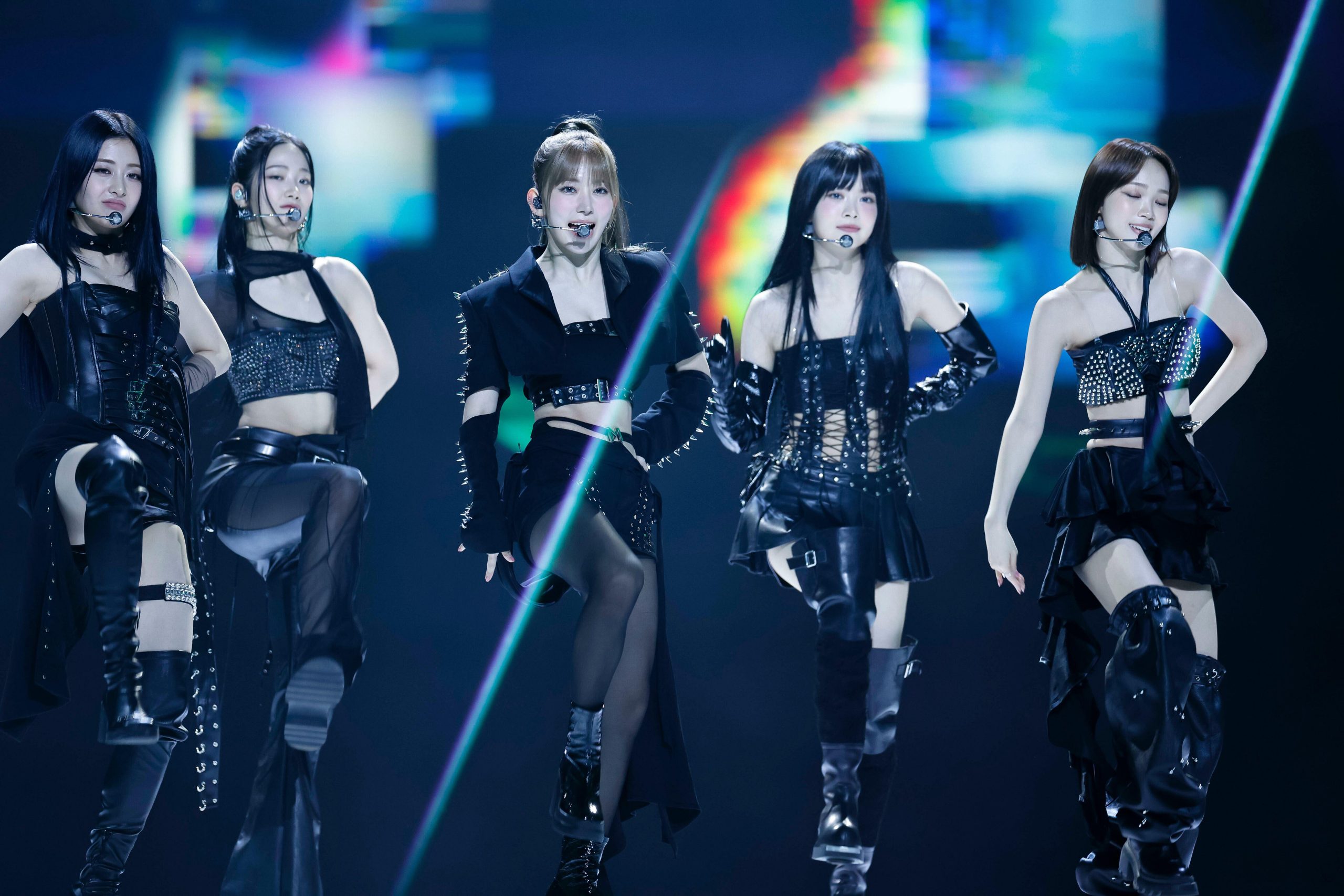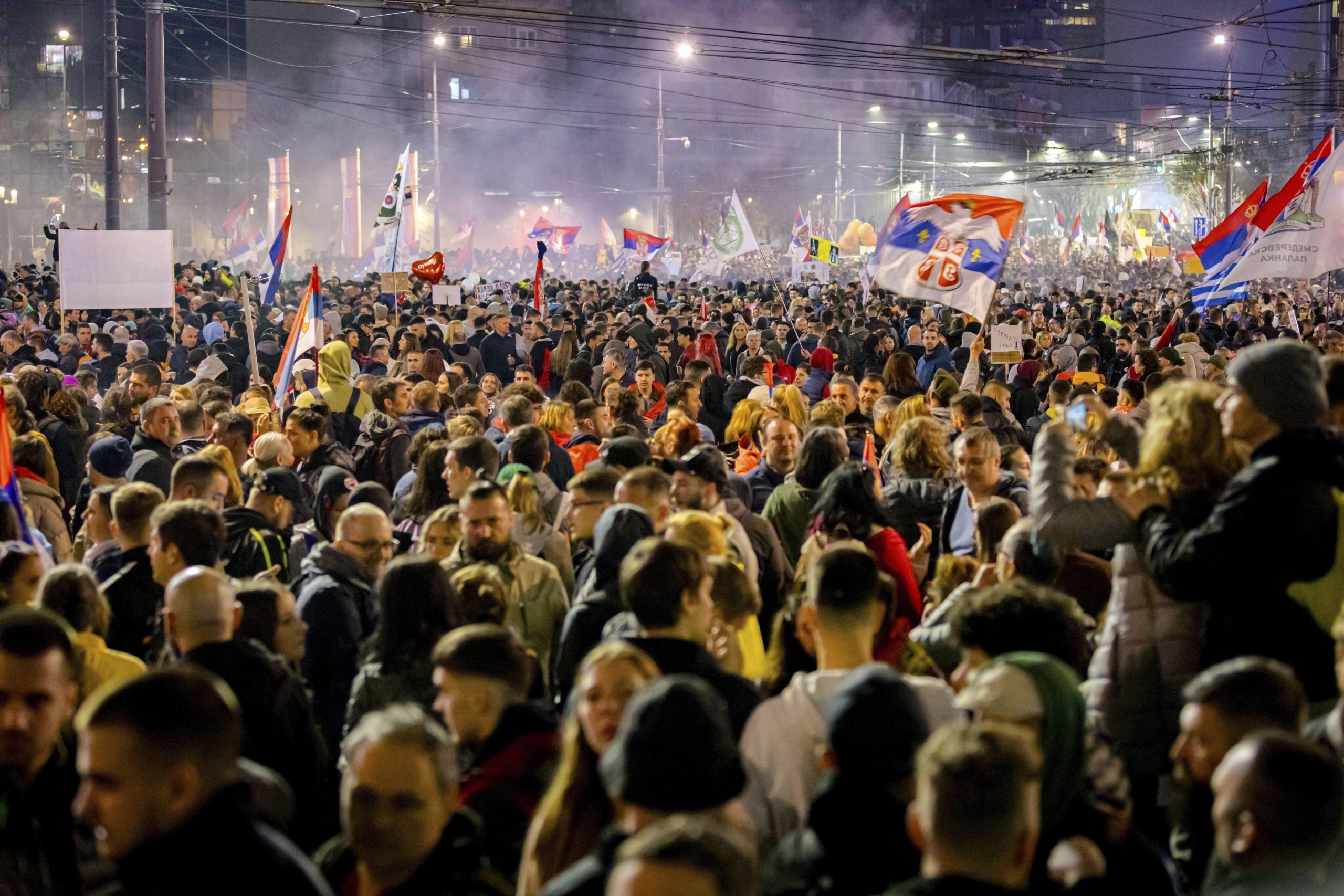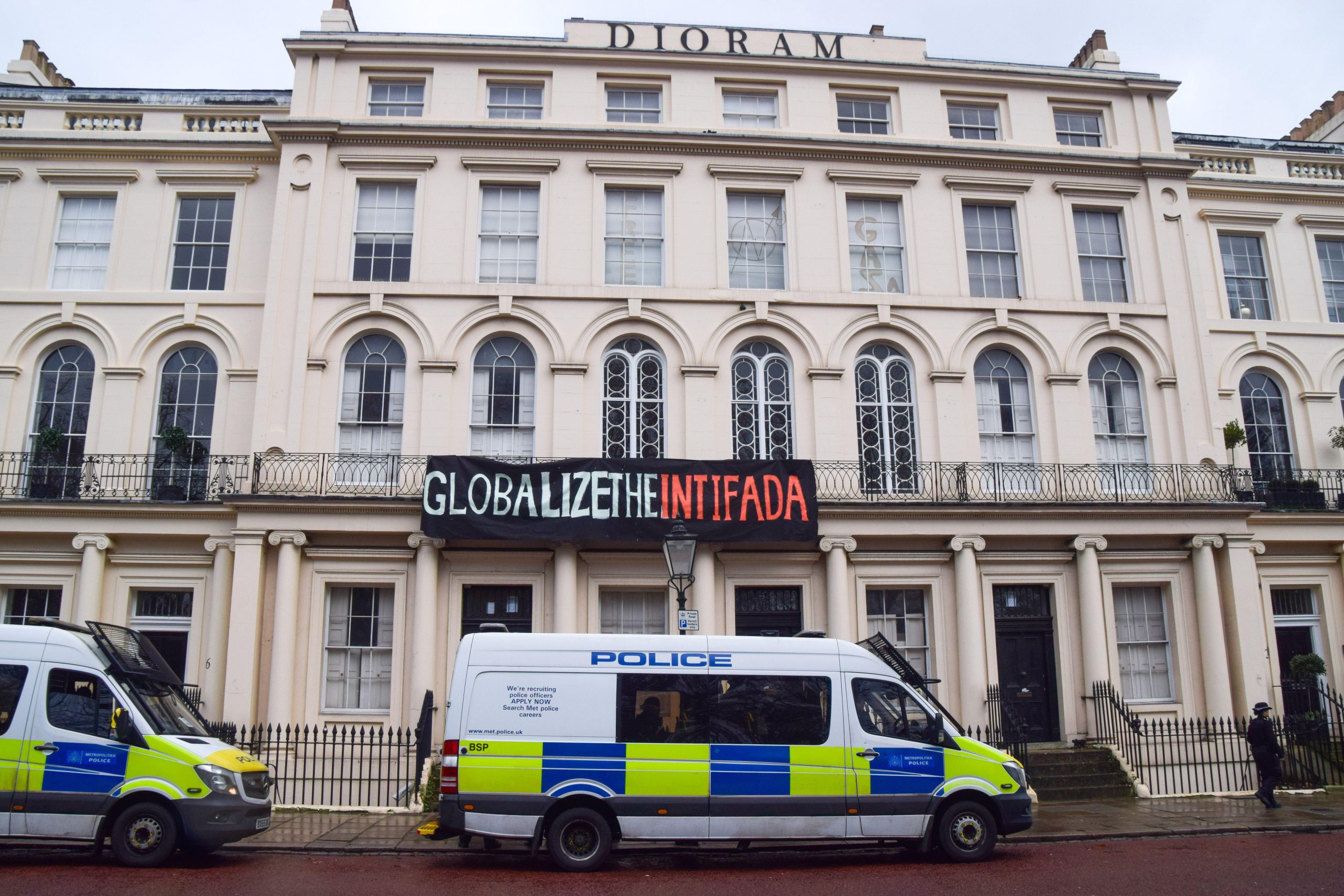[vc_row][vc_column][vc_single_image image=”104907″ img_size=”full”][vc_column_text]In just a few days, Dutch historian Tayfun Balcik, programme coordinator at The Hague Peace Project, a non-governmental organisation, will count articles by or about Muslims in four mainstream Dutch media for the last time. Since 1 November, he has counted and registered on a daily basis, building a database showing how often the word ‘terrorism’ is used in combination with ‘Muslim’, and how Muslim women are represented.
“One group is systematically framed negatively in Dutch media, and that’s problematic”, Balcik said.
The idea to analyse the reporting about Muslims quantitatively and qualitatively, emerged last year. Balcik, who has always been a very critical news consumer, explained: “I am a Muslim myself and have many Muslims in my social network. They all say that Dutch media are so negative about them, but this was left in a vacuum since there were no data. So I decided to register, neutrally and systematically. Now at least we know what we are talking about.”
Balcik cooperated with the The Hague Peace Project, online platform ‘Nieuw Wij’ (New Us) and website ‘Republiek Allochtonië’ (Republic Allochthonia). The project was funded by the Democracy and Media Foundation.
By far the most written about subject in the four papers he surveyed – centrist De Volkskrant, liberal NRC Handelsblad, right-centrist Algemeen Dagblad and conservative-populist De Telegraaf – when it comes to Muslims, is terrorism. Or, to be more precise: when any of these papers write about terrorism, it is usually about terrorism committed by Muslims. In De Telegraaf no less than 99% of terrorism-related reporting is about Muslims, according to Balcik.
In De Telegraaf “terrorism is being equated with Muslims, also but to a bit lesser extent in Algemeen Dagblad. NRC and Volkskrant are also more prone to use the word ‘terrorism’ when it comes to Muslim violence, but they use it also for violence by the extreme right or by the (Kurdish) PKK.”
Balcik said that terrorism is never used when it comes to state violence, with one exception: Iran. He added: “You could also describe actions of the Turkish state, the United States or Israel as terrorist. This needs to be discussed.”
Balcik also looked at the representation of Muslim women. He found that they were mainly portrayed as being “unfree”. In November Balcik counted 55 De Volkskrant articles in which Muslim women played a role. In 28 of those, the reader is left with the image of a “suppressed Muslima”. The burqa ban (a form of which was introduced in the Netherlands in summer 2018), gender inequality in Islam, discomfort about the headscarf, and female genital mutilation were the subjects most often written about. “And Muslim women themselves are hardly ever quoted,” Balcik added.
Volkskrant editor-in-chief Philippe Remarque dismissed Balcik’s work as “of not much value”. He told Index on Censorship: “It is logical that the words ‘Muslim’ and ‘terror’ are often combined in our reporting because these events are in the news. It doesn’t say anything about our attitude towards Muslims. Had Balcik tallied the words ‘sexual abuse’ and ‘Catholic church’ in the last couple of years, he would sure have found a correlation as well. Would he conclude that we report negatively and one-sidedly about Catholics?”
Remarque also criticised Balcik’s assertion about the paper’s coverage of Muslim women: “We try to offer a diversity of perspectives. We have a series of interviews in which Dutch people from different backgrounds talk about their experiences with discrimination. We also have a Muslim columnist, Ibtihal Jadib, who recently wrote about how she wants to convey her religion to her children. Apparently, Balcik judges her columns as negative about Muslims. I find that narrow-minded.”
Confronted with Remarque’s criticism, Balcik said: “Interesting comment from a newsmaker. As if there is no editorial line in which news is prioritised and what is called ‘terrorism’ and what isn’t. ‘News’ isn’t objective but is always a selective representation of events.” He continued: “When I would analyse the reporting about Christians or Catholics, I would tally all reporting about that group, including about Christian political parties, Christmas, Easter, churches, etcetera. Would ‘sexual abuse’ then top the topics list?”
Balcik doubted whether Remarque understood what his tally encompassed, and said: “Also, he doesn’t seem to understand how politicised and troubled the words ‘Muslim’ and ‘Islam’ have become in the Netherlands. But if he really wants a comparison, and if he has a budget, I can make the same tally and analysis about Christians and Jews in De Volkskrant. We can then sit together and compare the outcomes.”
Balcik’s aim with the project is to open a dialogue. When the tally is done, he is going to make his final analysis and write a report that discusses how the media portrays “terrorism” and “Muslim women”, in addition to the themes of “them and us rhetoric” and “criminality”. The report will then be debated at an event in an Amsterdam cultural centre, with, Balcik hopes, the participation of the editors-in-chief of the four papers. He also wants to raise the issue of the lack of diversity in the newsrooms of the four scrutinised papers.
For Elske Schouten, deputy editor-in-chief of NRC Handelsblad, this is an important point. In an email to Index on Censorship, she referred to a survey that the paper did last year, which found that Dutch print and television newsrooms had become slightly less white between 2015 and 2018: from 96.8% white in 2015, to 94.6% white by the end of 2018. This contrasts with the Netherlands as a whole, which has a non-western migration background population of 13%.
“We absolutely want to do better and we are working on that,” Schouten said. “I think it is hard for Balcik to count this. You don’t always know who is Muslim or not, or who is white or not. Take me: my name is super-Dutch but I am definitely not white.”
Asked about the value of Balcik’s research, she said: “We find diversity very important and all sorts of tallies are welcomed. However, we don’t necessarily focus on religious diversity but try to pay attention to different migration backgrounds, gender, sexual orientation or people in urban agglomerations and the periphery.”
Balcik remarked that Muslims hardly play a role on the cultural pages of the four papers, but Schouten said: “I am sure that on our cultural, economics and sports pages, people of a variety of religious paths play a role. We only make their religion explicit when it is relevant, which is usually not the case.” She paged through the last Cultural Supplement of NRC and determined that in two of the six big articles a “maybe Muslim” is the protagonist.
Balcik agrees that the religion or cultural background of the protagonist or other actors in a story isn’t always relevant, but pointed out: “When people with a migration background or Muslims contribute positively, they are ‘mayor (of Rotterdam) Ahmed Aboutaleb’, or ‘documentary maker Sinan Can’, but when the news is negative, it’s about a ‘Muslim terrorist’ or ‘Moroccan mafia’. We need to have a dialogue about this.”
Balcik would be the last to put the four papers on an equal footing when he analysed the results of his research. He said: “De Telegraaf and Algemeen Dagblad are rather extreme, while Volkskrant and especially NRC report much more meticulously.” De Telegraaf did not respond to questions from Index on Censorship.
The editor-in-chief of Algemeen Dagblad was on a holiday. His deputy, Frank Poorthuis, did not want to talk in his boss’s name, but e-mailed: “In all honesty, and between us, I, as an elderly white man, get a little bit tired of these questions because they are biased.”[/vc_column_text][vc_basic_grid post_type=”post” max_items=”4″ element_width=”6″ grid_id=”vc_gid:1548844915301-f4fe48ce-a0d7-7″ taxonomies=”11227, 8996″][/vc_column][/vc_row]

